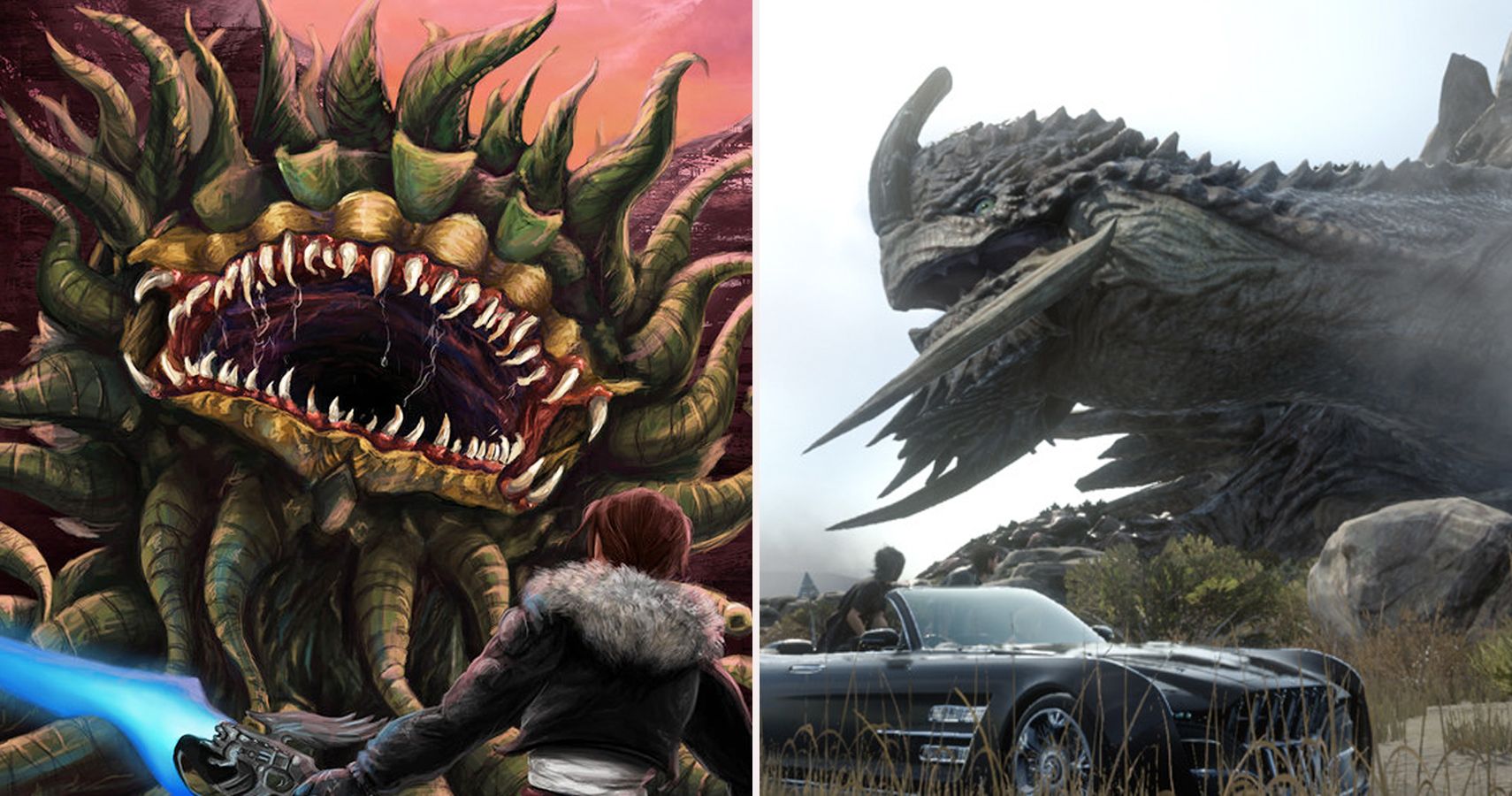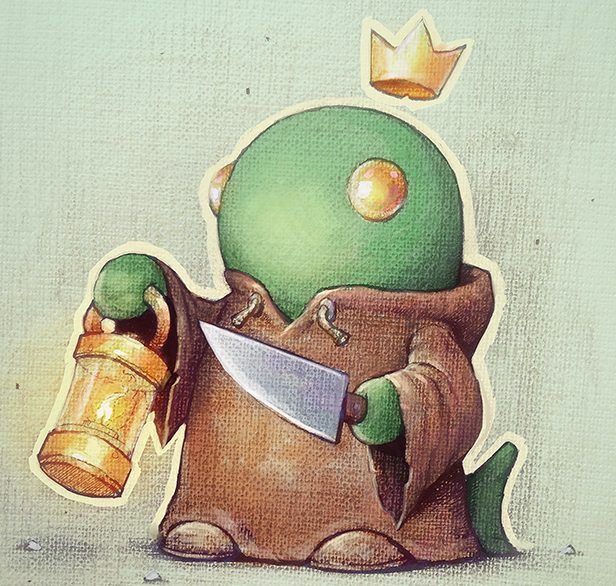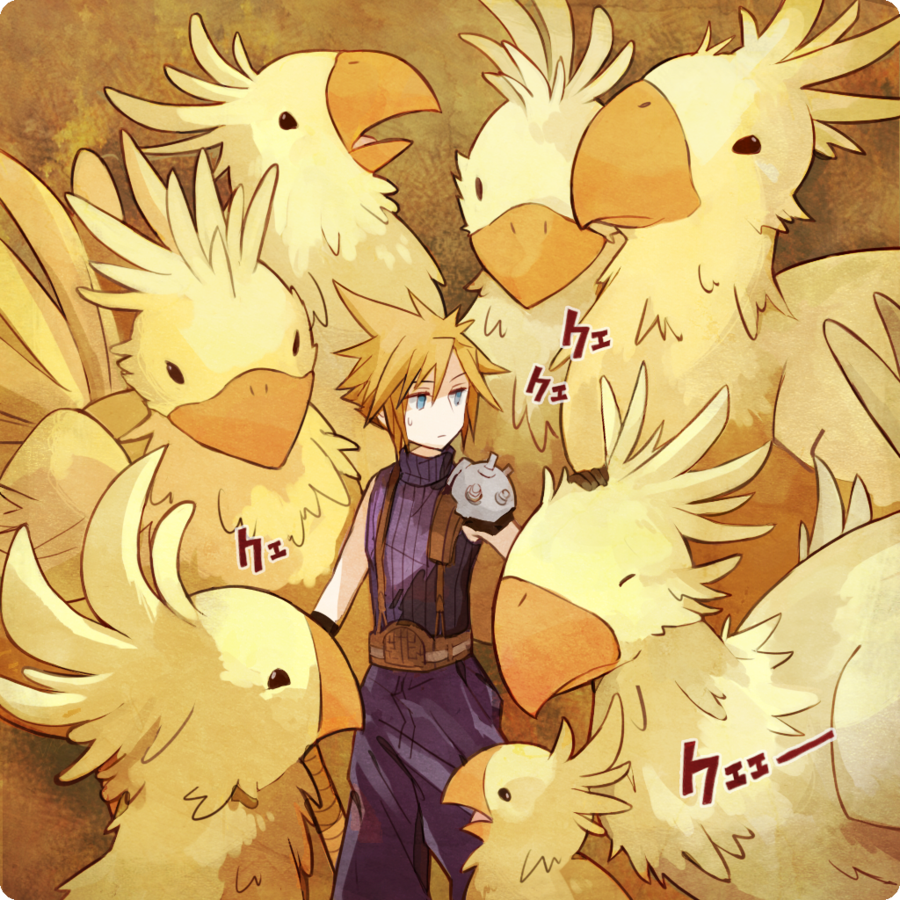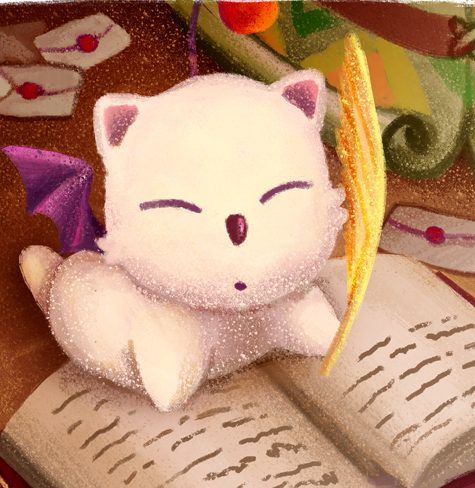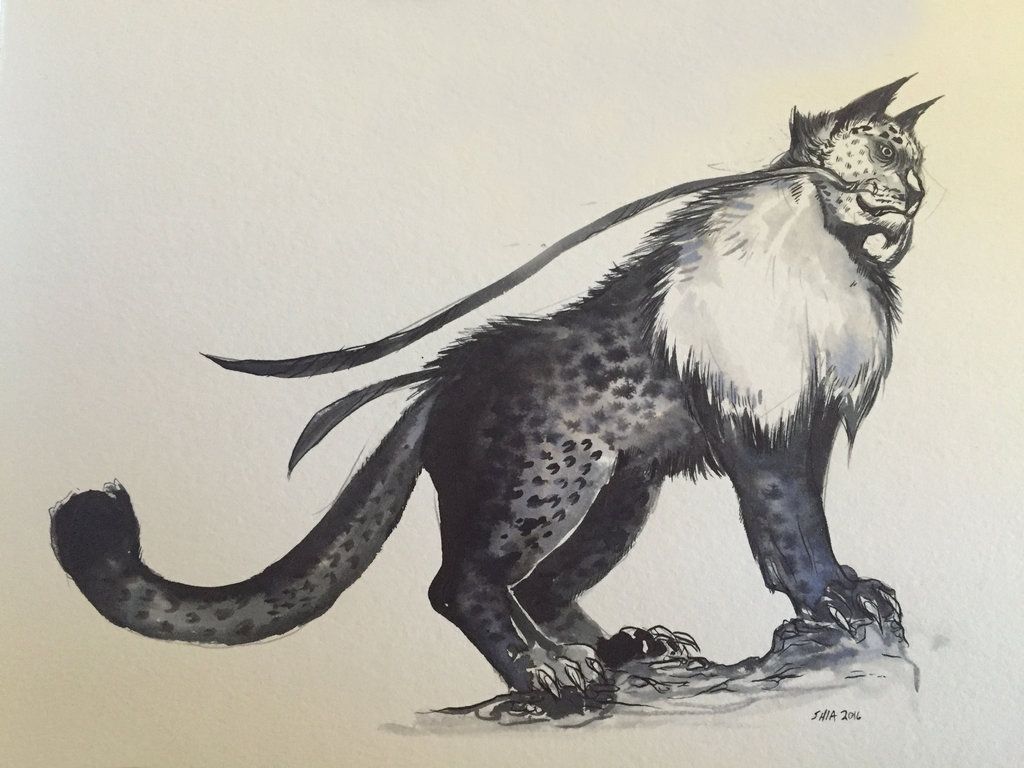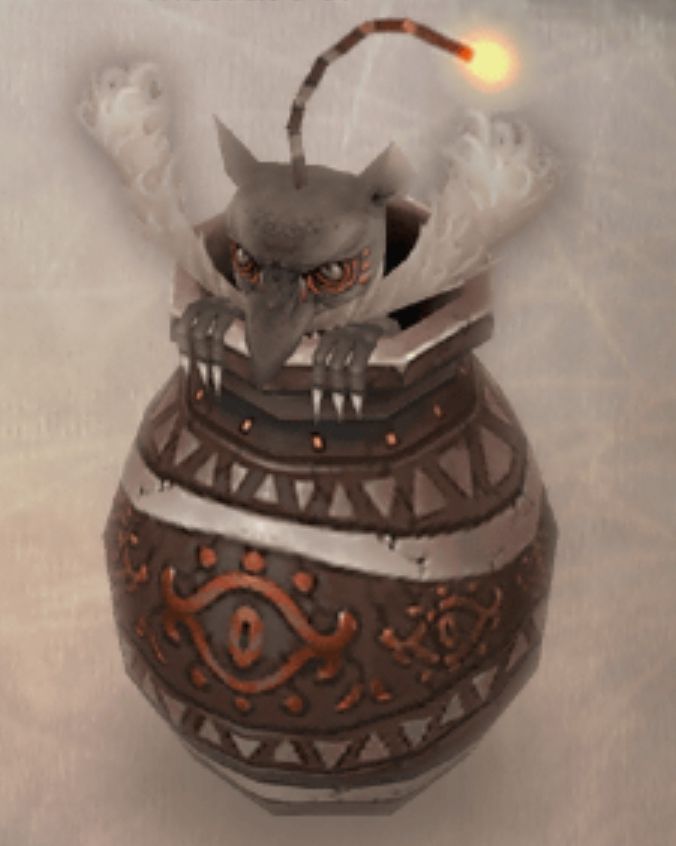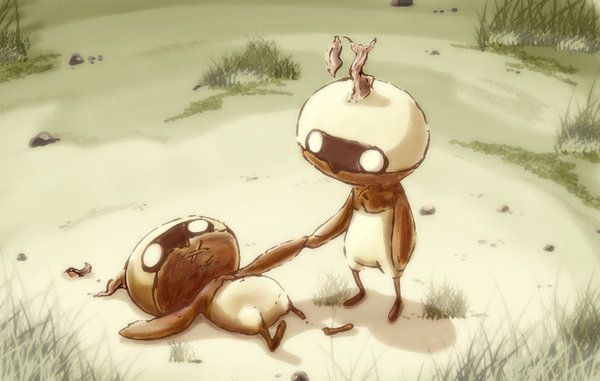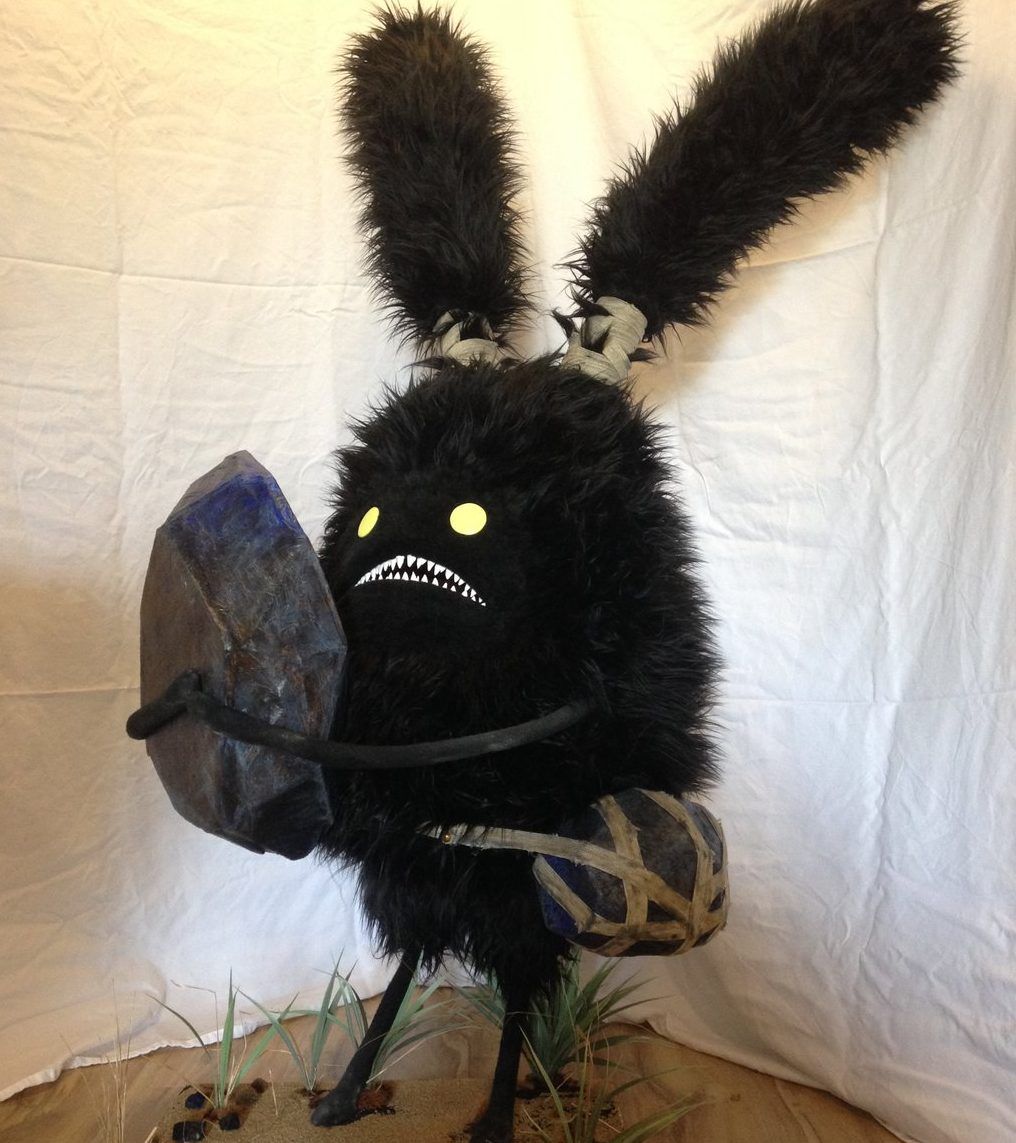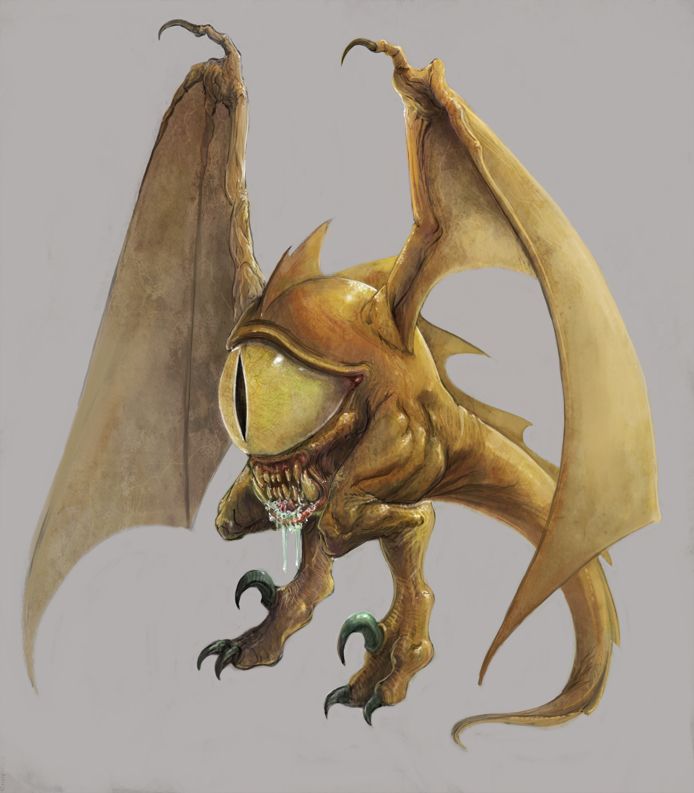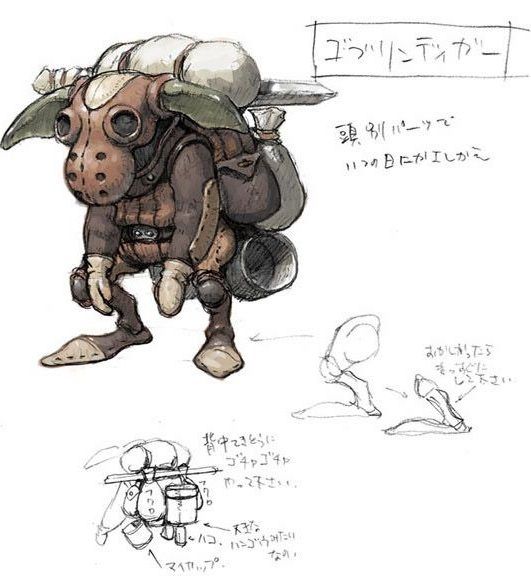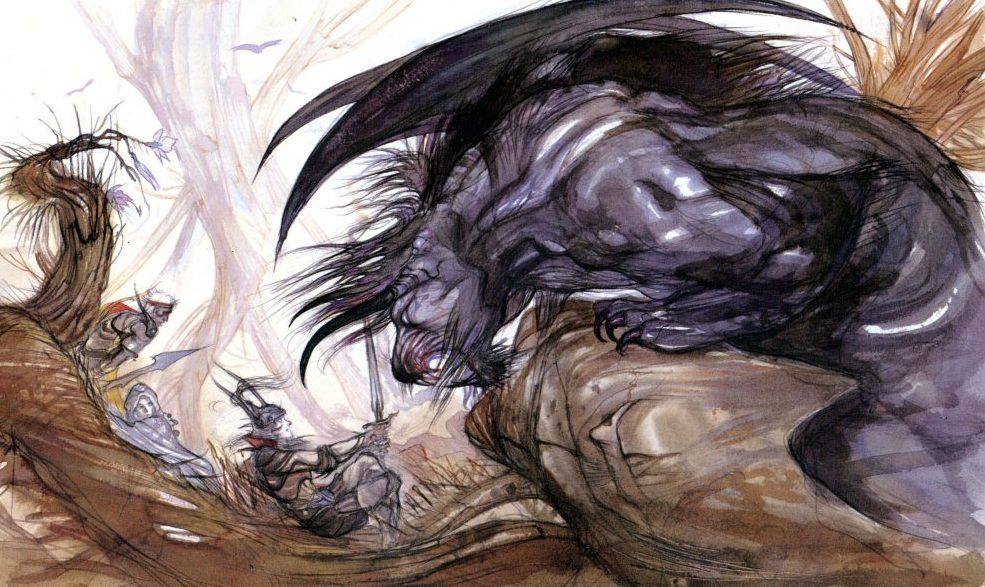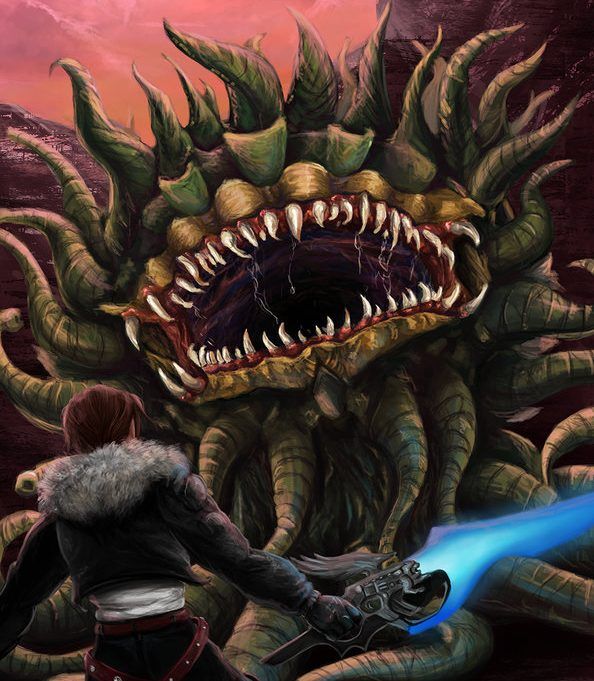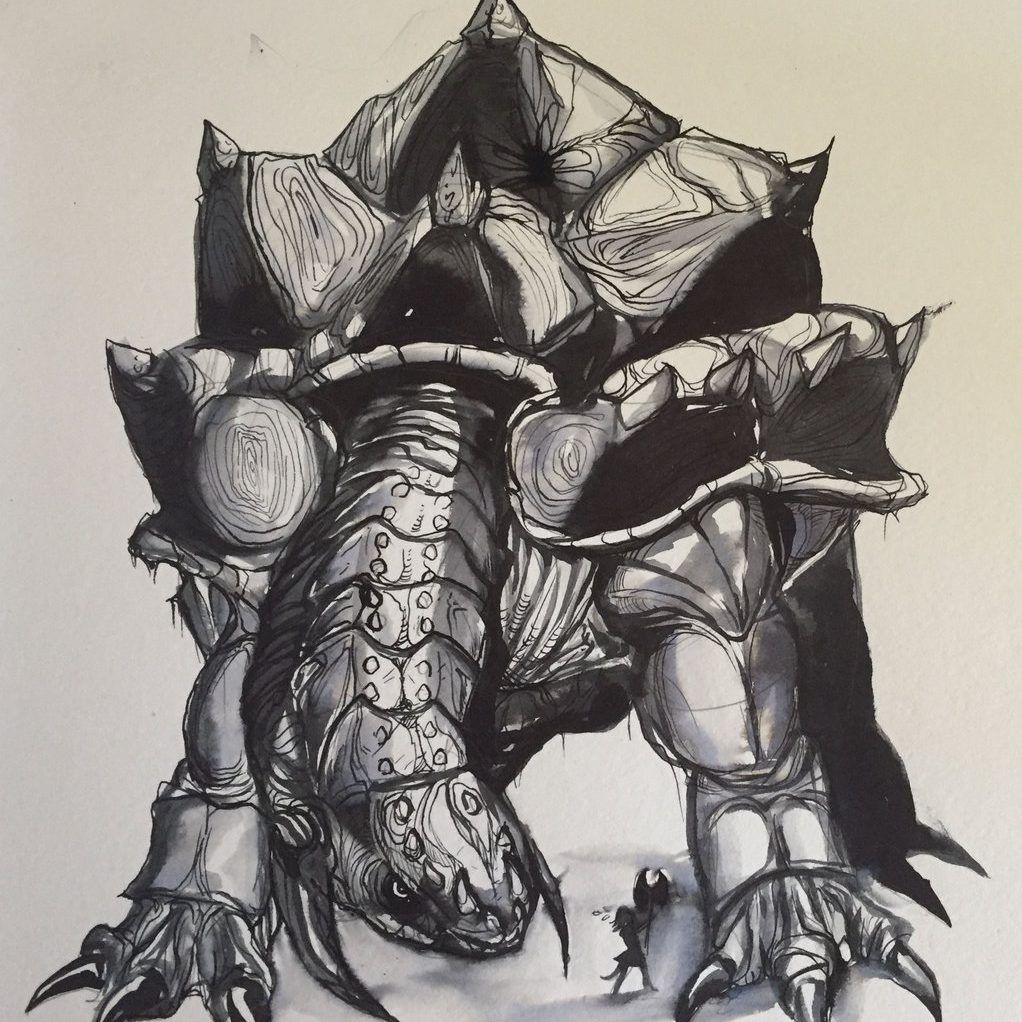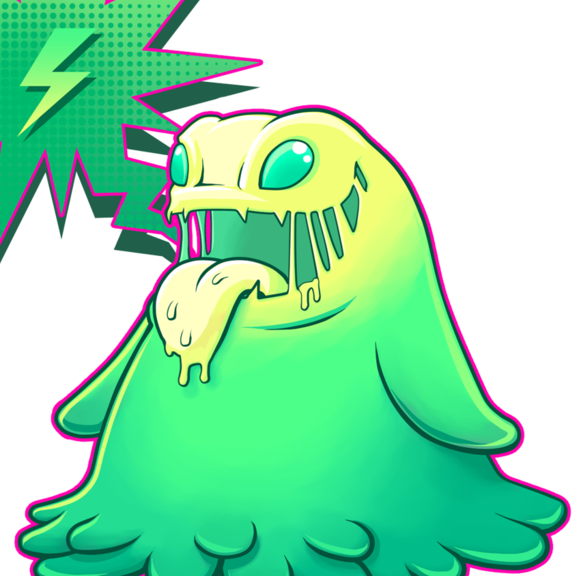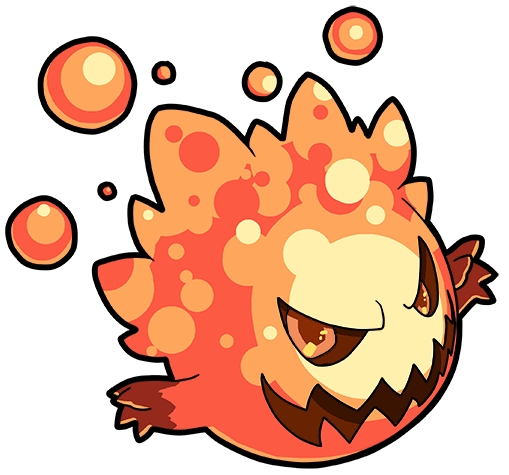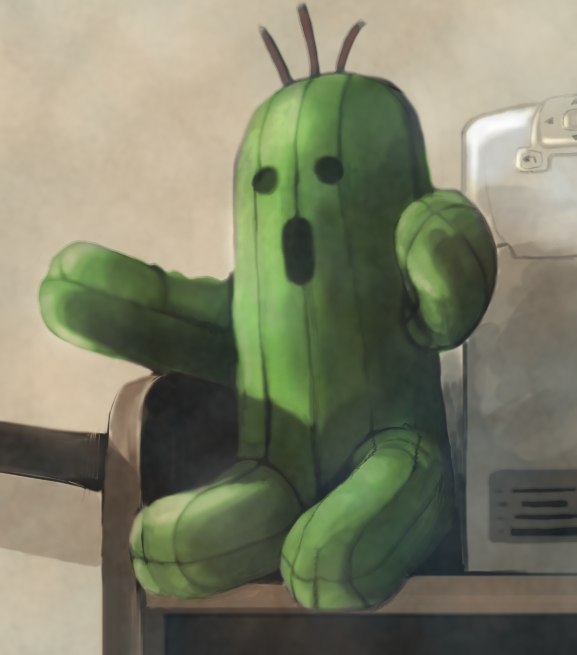Any fan of the Final Fantasy series is familiar with a few of the monsters that have reappeared across various games, like the cactuar and the tonberry. Some are nostalgic and symbolic enough to have inspired a multitude of parody cartoons and fan art depictions of these cute or memorable creatures, and can also be readily found the on various Final Fantasy merchandise.
However, not many know much about them other than that they've seen the same creature in multiple games, and always defeat them by whacking them with a sword. Many of them have intricate details about them that tie into the lore. Others may have less-than original design influences from outside of the franchise. And some have both.
Well, tune in for some creature trivia from some of the recurring monsters in the series. We'll try to find either the most popular or the most obscure facts about these lovable mainstays. There are no spoilers to worry about this time, so relax and enjoy learning a little more about moogles, chocobo, and some surprise creatures along the way!
15 Tonberry Are Deformed Citizens (FFXIV)
Tonberries typically show up as enemies, but sometimes come in more powerful forms as a boss. There are also a few games where a Tonberry is available as a summon or even an ally. They are most well-known for their 'Grudge' or 'Karma' that they take out on players with their kitchen knife. They seem to be based on a creature that appears in more than one folklore, the Japanese Umibozu and the Danish sea monk; a bald fish man in a robe.
Although they are typically fiends, the Final Fantasy MMORPGs have given them origins where they were once people. In FFXI, Tonberries were once members of the Kuluu race who were mutated by the crystals a thousand years ago. In FFXIV, they were Nymian citizens turned into monsters by a disease called the 'Green Death.'
14 Chocobo Come From Studio Ghibli
Chocobos are large birds, and the Final Fantasy equivalent of horses; the mounts for which many characters use as transportation, even in battle. They are sometimes capable of combat, able to peck, kick, or even summon meteors. Some games differentiate the abilities of the chocobos by their color, where a black chocobo might be able to fly even as an adult.
Chocobos are probably the closest to a series mascot and there's even a spin-off series where the main character is always a chocobo. As a nod to Final Fantasy, chocobos appear in a multitude of places, even outside of Square Enix media or collaborations. However, the widely held belief is that chocobos themselves were adapted from 'horseclaws' from the animated movie Nausicaa of the Valley of the Wind.
13 Moogle Are Bat Moles
The moogle is the other biggest mainstay in the Final Fantasy universes. They are almost always helping the player in some capacity. They've been known to act as a save points, a mailing service, or even helpful providers of information. A moogle makes some appearance in every game other than Final Fantasy I, II, and IV. During their inception, they were going to appear in FFII as a race called 'Clions,' but were scrapped and replaced with beavers.
Over the years, moogles have taken many forms. Though they are typically rodent-like fairies, FFIII, FFVIII, and Mobius give them feline features. Games within the Ivalice chronology depict moogles more like rabbits. And moogles have koala-like features in many of the spin-offs. However, their name actually comes from blending together the Japanese words for 'mole' and 'bat.' Batmoles!
12 Coeurl Are A Stolen Concept
The localization team for FFVII mistranslates these large cats as Cuahl, and this is probably related to why they rename them Torama (tiger demon) in the English versions of FVIII and FFIX. They are most well-known for the tentacles coming out of their faces, and their Blaster attacks that (depending on the game) will Paralyze, Stop, Petrify, or even cause instant Death.
Despite being a series staple, the Coeurl originates from Black Destroyer, written by A. E. van Vogt. In this science-fiction short story, Coeurl is both the name of the alien calls itself, as well as its species. Its appearance differs from the Final Fantasy adaptation in that the tentacles aren't its whiskers, but rather protrude from its back.
11 Magic Pots GIVE Elixers Too
Any who recognize this creature likely are used to seeing it as a nearly indestructible enemy. Magic Pots are well-known for requesting Elixirs or other items. In return, they typically bestow upon the party AP or loot. They appear to be imps that hide in pottery. They are usually non-aggressive, and their rewards are almost always worth it.
Although their appearances in FFV and FFVII exemplify taking Elixirs, there are a few games where the player rather gains Elixirs from them. In Crisis Core, the Magic Pot ability can yield five or even ten Elixirs depending on your luck at the DMW slots. In FFX, battling a Magic Urn is a minigame that can give an Elixir among its prizes. And in some games, it's recommended to steal Elixirs from these creatures.
10 Mandragora Aren't Sentient
Mandragora are small plant-creatures. In their first appearance in FFVII, they looked like tall weeds that walked around on their roots. It wasn't until FFXI that they took on their current cute appearance that recurs in a few other games in the series. Sometimes they are NPCs involved in quests, for example when they flee in terror at a muscly 'gentleman' making kissy faces.
It's a little sad, but some games suggest that these adorable onion children are actually sentient. In FFXIV, this is merely speculation. But in FFXI, they are credited with having evolved their own culture, clothes, and telepathic language. Yet still, these non-aggressive plant monsters are hunted for their leaves. In FFXII, if a Mandragora grows in a bloody area, it becomes a Mandragora Prince which can rarely grow poisonous four-leaf clovers atop its head.
9 Spriggans Lose Their Will To Live Without A Rock To Cuddle'
Spriggans are creatures from Cornish fairy tales. They typically guard treasure or other fairies. It has become one of the central representative monsters of the MMORPG, Final Fantasy XIV. These ridiculous little creatures always carry around a gem or ore that powers their abilities and also gives them their will to live until it is taken away. In-game lore says they are good luck, and that they are not biological but rather vessels for the earth's will.
Originally, as an ugly nature spirit, it seemed to have the potential to be like any other myth for the Final Fantasy series to adapt, but it's had a tough time getting an appropriate placement. It was almost a type of ogre in FFIII before not making it into the final game, it was a fire demon in Crisis Core, and was a shadowy figure of an Elvaan in FFXI.
8 Ahriman Parts Have Magical Uses
Over the years, the Ahriman's design hasn't changed too much. It's usually a round winged demon with a single eyeball. In Zoroastrian mythology, Ahriman is the devil. The name Angra Mainyu means 'devil,' but in another language, which makes it odd that it's an entirely separate boss in FFX-2. Though, Crisis Core and FFXIV keep their Angra Mainyu in line with other Ahriman designs.
Ahriman debuted in Final Fantasy III as one of the final bosses guarding the Dark Crystals. It is in FFXI, that parts of the creature are used for magic, from its wings to its eye. Its tears can cure for blindness and its lens can be ground into an invisibility powder. The Blue Mage Raubahn gained his most used skill, the Ahriman spell Eyes on Me, by the Ahriman lens that was implanted onto his own left eye.
7 Goblin Have Communication Tech Implanted (FFXI)
Goblins are a staple in fantasy role-playing games, and were often the first enemy encountered by Final Fantasy fans. Their design typically gives them short stature, pointed ears, and clothes. Their garb and use of tools implies that they are sentient. They often hunt in packs, and are sometimes capable of stealing. Some games also give them use of Goblin Punch, which can do variable damage.
In FFXI (and later in FFXIV), Goblins are a race of nomadic beastmen that obscure their faces. They are often better at crafting and gathering than other beastmen, or even over Enlightened Races. Goblins are capable of integrating into cities and coexisting with the citizens there as merchants. As infants, linkpearls are inserted into an incision behind their ears, giving them all the ability to communicate with each other across Vana'diel.
6 Behemoth Don't Appear in FFI
Oddly enough, Behemoth may not be mindless beasts but rather beastman mutants or a species on the verge of evolving. A handful of games depict Behemoths standing on two legs; like FFII, VI, and X. But among them are games where Behemoths also have weapons and clothing; like FFXIII (wherein they stand when they are below half their health) and FFXII. That, and in most games, they can use magic.
Behemoths are usually one of the strongest monster families in games that they appear. They would hold the honor of being the only monster here that appears in every main installment if the official artwork were accurate. However, despite Yoshitaka Amano's amazing rendition, FFI contains no Behemoth, and the depiction was merely promotional, until it would be rendered in all subsequent games.
5 Malboro And Sesame Street Share DNA
The Malboro is one of the more difficult monsters in the series, particularly for its propensity for inflicting various status ailments on the party. It's a large tentacled plant with a giant maw with rows of fangs. Its quintessential ability is the 'Bad Breath' attack that can often be copied as a Blue Magic spell, though Malboros did not have this attack in its first appearance in FFII.
They were called Oscars in early versions of FFVI, perhaps as a nod to the Sesame Street character that lives in the trash. The name Malboro is often thought to be a reference to Marlboro Cigarettes, as a kind of anti-smoking campaign. However, it's most likely that the main derivation of its name is the Latin and Greek 'mal' and 'boros,' literally bad breath.
4 Adamantoise Was Crazy In FFXV
The Adamantoise first debuted in FFII. Its design changes quite a bit from across its different appearances, but it's typically a large scaly turtle with spikes as tusks, horns, or on its shell. A popular glitch in FFVII involved the Adamantaimai wherein casting Barrier and MBarrier on one will make the creature attempt to use Cure. As it doesn't have the spell, the game will then crash or display an error message.
In most renditions of Adamantoise after the era of sprites, it is notably huge. It was massive in FFXIII, though it wasn't a huge deal to kill. But was even larger in FFXV, where the Adamantoise is bigger than a mountain. Due to a tidbit by a developer, it was believed it would take fifteen hours to take down its five million HP, but was doable in under a few hours. And after a patch, it was doable in minutes.
3 Flan Are Called Purin (Pudding) In Japan
Flan are slime monsters that recur in most Final Fantasy entries and spin-offs, calling Purin (pudding) in Japanese releases. Although they usually look like gelatinous blobs, there are some iterations that make the creature look more like an actual dessert like their namesakes. Flan are often highly resistant to physical attacks, particularly in later games, and also tend to have an elemental affinity.
Although Flan in its traditional form first appeared in FFII, there was a green slime type of enemy with a face that appears in FFI. Remakes of FFI now include Red Flans in bonus dungeons, making FFVII now the only main entry without a Flan. And while some fans believe Flan monsters are a lazy imitation of Dragon Quest's Slimes, both monsters are actually cartoony renditions of the Dungeons & Dragons slimes that have appeared since its very first sets.
2 Bomb Only Started "Expanding" In FFVII
Bombs are typically depicted as fireballs with arms and a villainous face. They're most well-known for self-destructing to deal massive damage at the cost of its own life. This ability is also often a Blue Magic spell that can be learned. Beginning in FFVII, Bombs tend to expand upon being attacked, and upon its third growth it will explode.
Like flans and behemoths, the bombs are very common monsters, having appeared in every main installment of the Final Fantasy series since FFII. In many games that go into their composition, they're created by magic and/or technology rather than occurring naturally in the wild. For some reason in FFIX, using the Fenrir eidolon on Bombs can cause the monster to glitch themselves invisible when they expand.
1 Cactuar Are High School Drawings Brought To Life
Cactuars are easily a favorite among Final Fantasy fans. These quick-footed plant fiends speed through the deserts of FF worlds. They commonly use their 1000 Needles attack to do exactly a thousand damage. Some games depict Cactuars as having their own language, and FFX-2 has them have their own society. They are often weak to water, much like real cacti.
The Cactuar might have originally been intended to merely be a fiend that disguises itself as a cactus, rather than being an actual plant. Its original name was Sabotender, probably combining the Japanese word for cactus and the English 'pretender'. So now, Cactuar is speculated to be 'cactus' and 'liar.' Though, it probably wasn't over thought, as its first design was just a doodle Tetsuya Nomura drew in his high school notebook.

